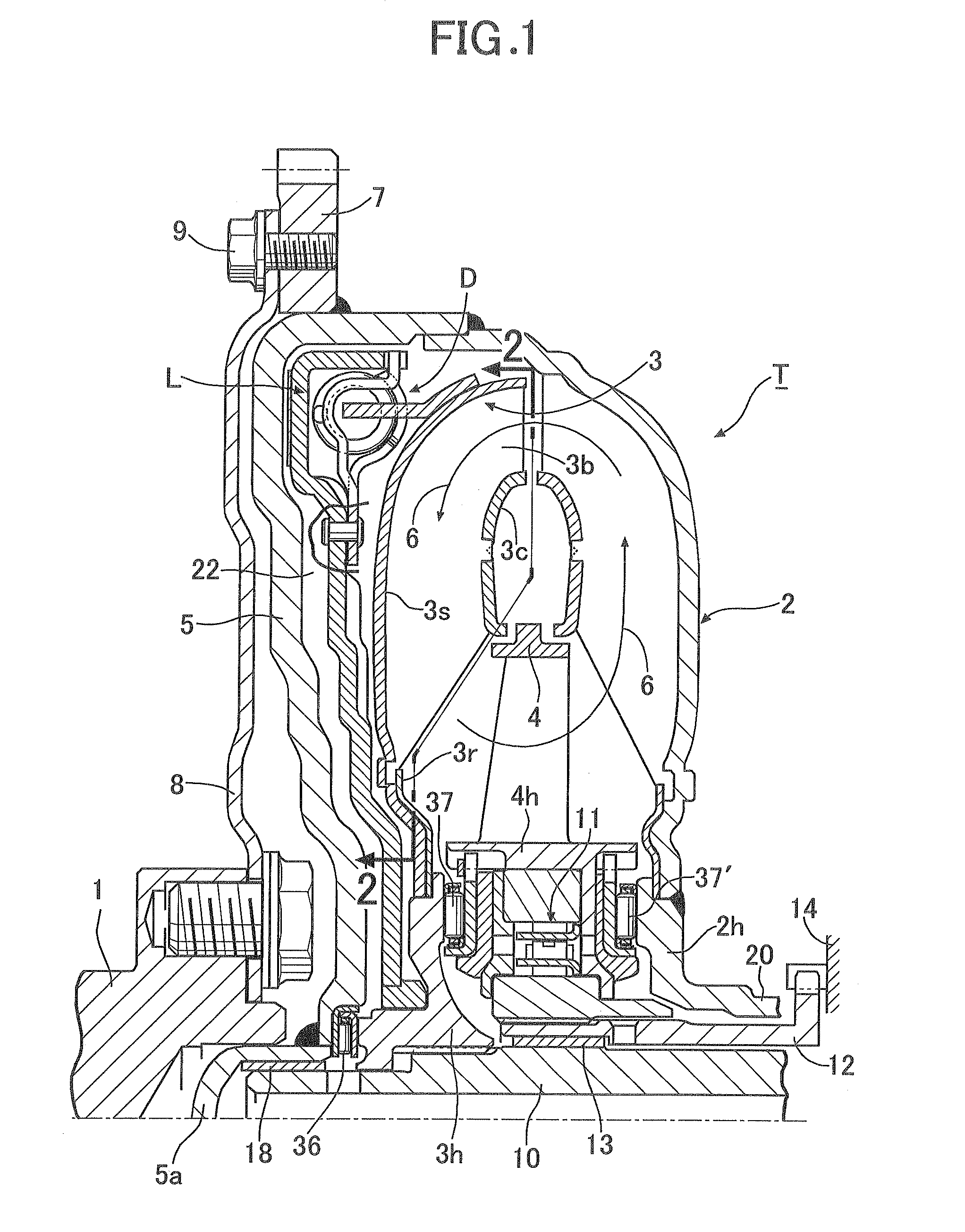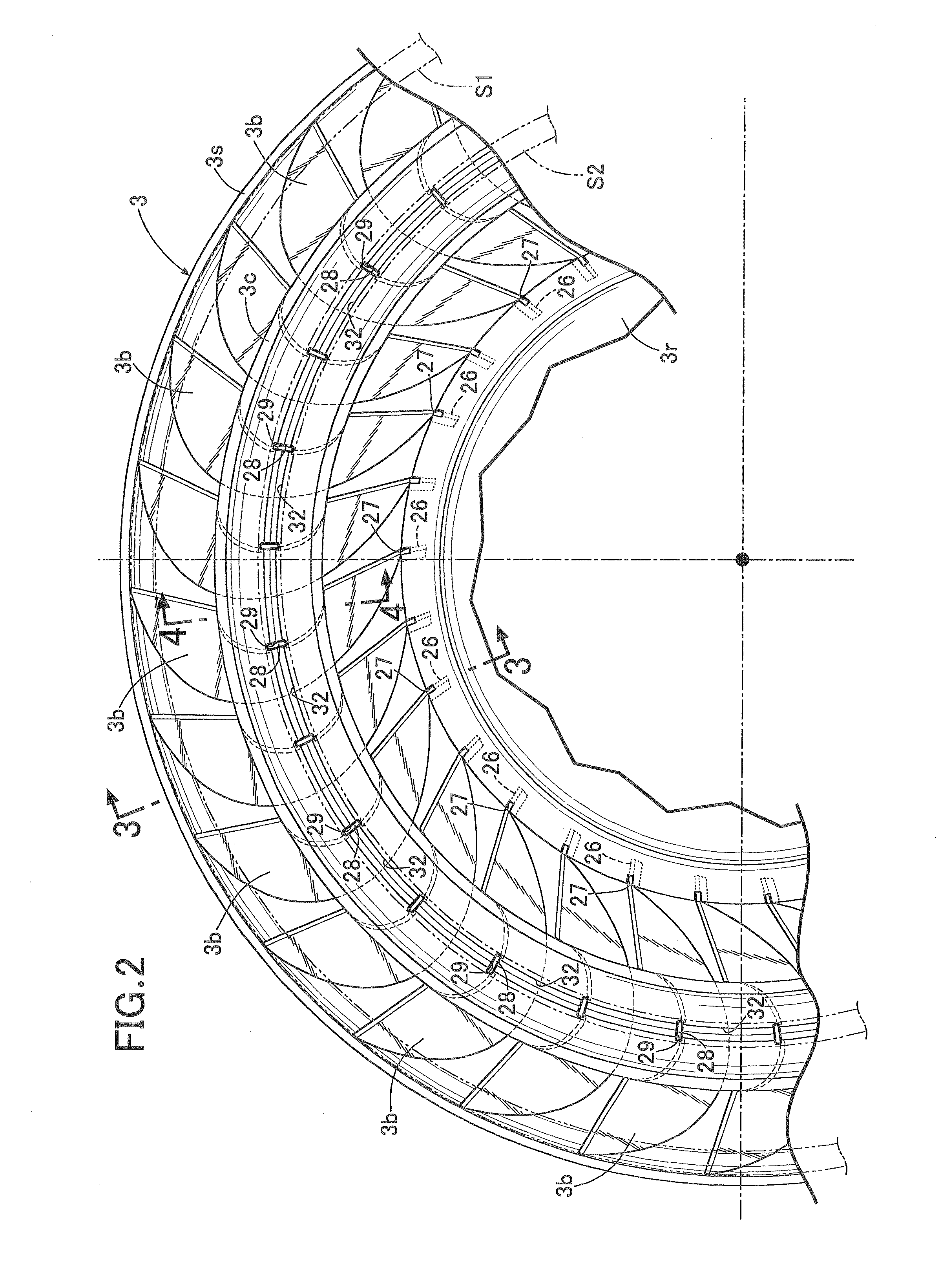Manufacturing method of impeller for fluid transmitting device
a technology of fluid transmission device and manufacturing method, which is applied in the direction of fluid gearings, metal rolling stands, liquid fuel engine components, etc., can solve the problems of reducing and distributing the core strictly horizontally. , to achieve the effect of improving the yield of brazing material
- Summary
- Abstract
- Description
- Claims
- Application Information
AI Technical Summary
Benefits of technology
Problems solved by technology
Method used
Image
Examples
first embodiment
[0026]First of all, the present invention shown in FIGS. 1 to 5C will be described. In FIG. 1, a torque converter T as a fluid transmitting device includes a pump impeller 2, a turbine impeller 3 disposed facing the pump impeller 2, and a stator impeller 4 disposed between inner peripheral portions of the pump impeller 2 and turbine impeller 3. These three impellers 2, 3, and 4 define therebetween a circulation circuit 6 through which to transmit power by means of hydraulic oil.
[0027]A side cover 5 covering the outer surface of the turbine impeller 3 is provided consecutively and integrally by welding to an outer peripheral portion of a shell 2s of the pump impeller 2. A ring gear 7 for starting an engine is welded to the outer peripheral surface of the side cover 5, and a drive plate 8 joined to a crankshaft 1 of the engine is fixed to this ring gear 7 with a bolt 9. A thrust needle bearing 36 is interposed between a hub 3h of the turbine impeller 3 and the side cover 5.
[0028]An ou...
second embodiment
[0053]Next, the present invention shown in FIGS. 6 and 7 will be described.
[0054]In the second embodiment, the adjacent positioning holes 29 communicate with each other through multiple guide grooves 32 that are arranged in parallel. In this configuration, the groove depth of each of the multiple guide grooves 32 is set smaller than the groove depth of each guide groove 32 in the previous embodiment. The other features of the configuration are the same as the previous embodiment. Thus, in FIGS. 6 and 7, the portions corresponding to those in the previous embodiment are denoted by the same reference numerals, and overlapping descriptions are omitted.
[0055]According to the second embodiment, the groove depth of each of the multiple guide grooves 32 arranged in parallel is set sufficiently smaller than the groove depth in the previous embodiment in which the adjacent positioning holes 29 communicate with each other through a single guide groove 32, and the molten brazing material is ef...
PUM
| Property | Measurement | Unit |
|---|---|---|
| thickness | aaaaa | aaaaa |
| thickness | aaaaa | aaaaa |
| groove depth | aaaaa | aaaaa |
Abstract
Description
Claims
Application Information
 Login to View More
Login to View More - R&D
- Intellectual Property
- Life Sciences
- Materials
- Tech Scout
- Unparalleled Data Quality
- Higher Quality Content
- 60% Fewer Hallucinations
Browse by: Latest US Patents, China's latest patents, Technical Efficacy Thesaurus, Application Domain, Technology Topic, Popular Technical Reports.
© 2025 PatSnap. All rights reserved.Legal|Privacy policy|Modern Slavery Act Transparency Statement|Sitemap|About US| Contact US: help@patsnap.com



